ISO/IEC 646 is a set of ISO/IEC standards, described as Information technology — ISO 7-bit coded character set for information interchange and developed in cooperation with ASCII at least since 1964. Since its first edition in 1967 it has specified a 7-bit character code from which several national standards are derived.
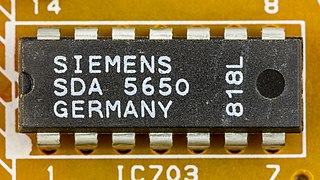
Programme delivery control (PDC) is specified by the standard ETS 300 231, published by the European Telecommunications Standards Institute (ETSI). This specifies the signals sent as hidden codes in the teletext service, indicating when transmission of a programme starts and finishes.
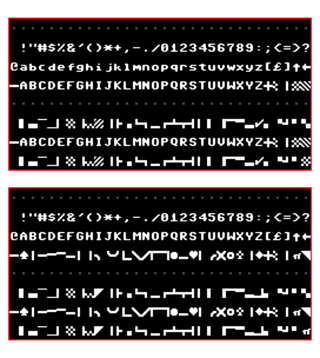
PETSCII, also known as CBM ASCII, is the character set used in Commodore Business Machines' 8-bit home computers.
ISO/IEC 2022Information technology—Character code structure and extension techniques, is an ISO/IEC standard in the field of character encoding. It is equivalent to the ECMA standard ECMA-35, the ANSI standard ANSI X3.41 and the Japanese Industrial Standard JIS X 0202. Originating in 1971, it was most recently revised in 1994.
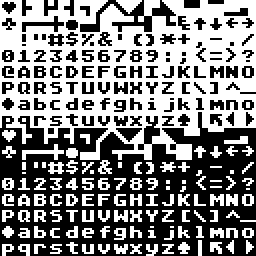
The ATASCII character set, from ATARI Standard Code for Information Interchange, alternatively ATARI ASCII, is a character encoding used in the Atari 8-bit family of home computers. ATASCII is based on ASCII, but is not fully compatible with it.

Michael Everson is an American and Irish linguist, script encoder, typesetter, type designer and publisher. He runs a publishing company called Evertype, through which he has published over a hundred books since 2006.
CEPT Recommendation T/CD 06-01 was a standard set in 1981 by the European Conference of Postal and Telecommunications Administrations (CEPT) for the display of Videotex; specifically, for the Videotex Presentation Layer Data Syntax. It was revised a number of times in the 1980s, and also later redesignated as recommendation T/TE 06-01.
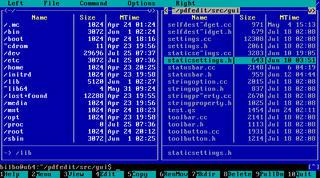
Box-drawing characters, also known as line-drawing characters, are a form of semigraphics widely used in text user interfaces to draw various geometric frames and boxes. These characters are characterized by being designed to be connected horizontally and/or vertically with adjacent characters, which requires proper alignment. Box-drawing characters therefore typically only work well with monospaced fonts.
A code point, codepoint or code position is a unique position in a quantized n-dimensional space that has been assigned a semantic meaning.
The C0 and C1 control code or control character sets define control codes for use in text by computer systems that use ASCII and derivatives of ASCII. The codes represent additional information about the text, such as the position of a cursor, an instruction to start a new line, or a message that the text has been received.
T.51 / ISO/IEC 6937:2001, Information technology — Coded graphic character set for text communication — Latin alphabet, is a multibyte extension of ASCII, or more precisely ISO/IEC 646-IRV. It was developed in common with ITU-T for telematic services under the name of T.51, and first became an ISO standard in 1983. Certain byte codes are used as lead bytes for letters with diacritics (accents). The value of the lead byte often indicates which diacritic that the letter has, and the follow byte then has the ASCII-value for the letter that the diacritic is on.

World System Teletext (WST) is the name of a standard for encoding and displaying teletext information, which is used as the standard for teletext throughout Europe today. It was adopted into the international standard CCIR 653 of 1986 as CCIR Teletext System B.
YUSCII is an informal name for several JUS standards for 7-bit character encoding. These include:
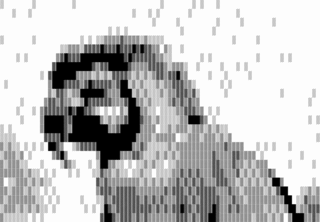
Text-based semigraphics, pseudographics, or character graphics is a primitive method used in early text mode video hardware to emulate raster graphics without having to implement the logic for such a display mode.

The Atari ST character set is the character set of the Atari ST personal computer family including the Atari STE, TT and Falcon. It is based on code page 437, the original character set of the IBM PC.
The Acorn RISC OS character set was used in the Acorn Archimedes series and subsequent computers from 1987 onwards. It is an extension of ISO/IEC 8859-1, similar to the Windows CP1252 in that many of the added characters are typographical punctuation marks.
MSX character sets are a group of single- and double-byte character sets developed by Microsoft for MSX computers. They are based on code page 437.
The TRS-80 computer manufacturered by Tandy / Radio Shack contains an 8-bit character set. It is partially derived from ASCII, and shares the code points from 32 - 95 on the standard model. Code points 96 - 127 are supported on models that have been fitted with a lower-case upgrade.
Sharp MZ character sets are character sets made by Sharp Corporation for Sharp MZ computers. The European and Japanese versions of the software use different character sets.
The Amstrad CPC character set is the character set used in the Amstrad CPC series of 8-bit personal computers when running BASIC. This character set existed in the built-in "lower" ROM chip. It is based on ASCII-1967, with the exception of character 0x5E which is the up arrow instead of the circumflex, as it is in ASCII-1963, a feature shared with other character sets of the time. Apart from the standard printable ASCII range (0x20-0x7e), it is completely different from the Amstrad CP/M Plus character set. The BASIC character set had symbols of particular use in games and home computing, while the CP/M Plus character reflected the International and Business flavor of the CP/M Plus environment. This character set is represented in Unicode as of the March 2020 release of Unicode 13.0, which added symbols for legacy computing.







